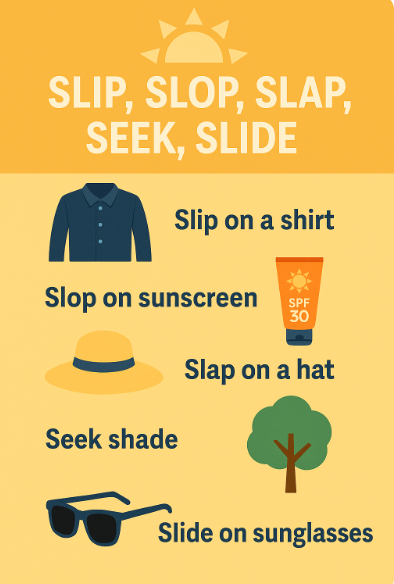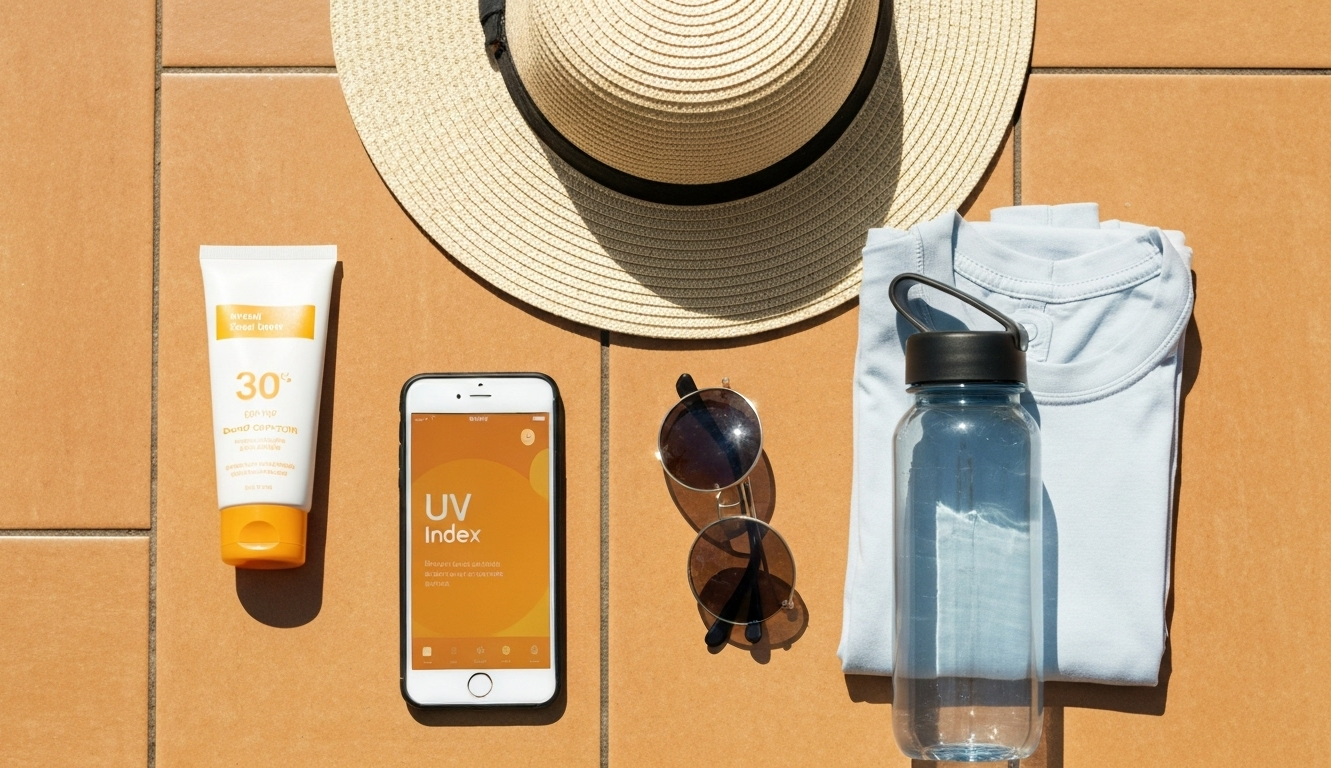For many expats, the decision to relocate comes with the promise of a sunnier lifestyle—more time outdoors, a better climate, and a healthier work-life balance. Whether you’re living beachside in Spain, working remotely from a terrace in Mexico, or exploring the outdoors in Australia or the U.S., chances are you’re getting more sun than you would back home.
But while sunshine lifts the mood and encourages active living, it also brings with it an invisible threat: ultraviolet (UV) radiation. Too much of it can lead to serious health consequences, including premature skin aging and, more worryingly, skin cancer. That’s why wearing sunscreen—and building sun-safe habits into your daily life—isn’t just something to remember on holiday. It’s essential if you plan to thrive in your new environment long-term.
The Expats’ Sun Trap: When UV Exposure Creeps In
One of the biggest mistakes new expats make is underestimating the sun. Moving from the UK or Canada to Spain or Australia, for instance, means you’re now exposed to significantly stronger UV levels, often on a daily basis—even when it’s cloudy.
According to Cancer Research UK, up to 80% of UV rays can penetrate cloud cover, and in countries closer to the equator or at higher elevations, the intensity of UV radiation is far greater than what many expats are used to. Even places like Canada and the UK regularly reach a UV index of 3 or more in spring and summer, which is the threshold where protection is recommended.
Why Daily Sunscreen Really Matters
Sunscreen isn’t just for avoiding a red nose on the beach. Used properly, it protects your skin from the cumulative damage caused by UV exposure—damage that accelerates aging and increases your risk of developing skin cancer.
- Skin cancer is the most common cancer in countries like the US and Australia.
- One in five Americans is expected to develop skin cancer in their lifetime.
- Melanoma—the deadliest form—can result from just a few intense sunburns over your life.
Sun damage is cumulative, and it’s often invisible at first. A tan might look healthy, but dermatologists warn that it’s actually a sign your skin is in distress. According to the FDA, ‘There is no such thing as a safe tan. The increase in skin pigment, called melanin, which causes the tan color change in your skin is a sign of damage.’
Breaking the Myths About Sun Safety
Many expats still hold on to outdated or incorrect beliefs about sun exposure. Let’s bust a few common ones:
- “I need a base tan for protection.”
False. A tan gives only minimal protection (equivalent to SPF 3). The process of getting it already damages your DNA. - “Darker skin doesn’t need sunscreen.”
While melanin offers some natural protection, people of all skin tones can suffer sun damage and get skin cancer—though it’s often diagnosed later in people with darker skin. - “It’s cloudy today, so I’m fine.”
Not true. UV rays penetrate clouds. If the UV index is 3 or higher, protection is needed regardless of the weather. - “I need sun for vitamin D.”
You only need a few minutes of mid-day sun on small areas of skin to produce enough. Beyond that, sunscreen use won’t meaningfully block vitamin D synthesis—and you can always supplement if needed.
The Cultural Shift: Learning from Australia
If you’re living in or visiting Australia, you’ll notice something striking: people take sun safety seriously. That’s because Australia has one of the highest skin cancer rates in the world—and responded decades ago with one of the most successful public health campaigns in history.
The iconic “Slip, Slop, Slap” campaign—Slip on a shirt, Slop on sunscreen, Slap on a hat—has become ingrained in the national consciousness. Today, schools enforce “no hat, no play” rules, and employers of outdoor workers provide sun protection as standard.
It’s a model worth copying. Attitudes in countries like the UK and the US are still catching up—particularly when it comes to viewing tanning as attractive or “healthy.” The truth is, healthy skin is protected skin, regardless of whether it’s bronzed.

Sun-Smart Habits: Daily Protection Made Simple
Living in a sunny location doesn’t mean hiding indoors — it just means being smart. Incorporating sunscreen and other protective measures into your daily routine is easier than you think, and it pays off massively in the long term.
Here are simple habits to build into your day:
- Apply a broad-spectrum SPF 30+ every morning.
Make it part of your routine like brushing your teeth. Use at least a teaspoon for your face and neck, and more for other exposed areas. Dermatologists recommend SPF 50 for extended outdoor exposure or if you’re fair-skinned. - Reapply every two hours.
Especially after swimming or sweating. Keep a small tube in your bag or car. - Don’t forget ‘forgotten’ spots.
Ears, neck, back of hands, and scalp (for those with thinning hair) are common areas for skin cancer — and often skipped. - Cover up.
Lightweight, tightly woven long-sleeved clothing, wide-brimmed hats, and UV-blocking sunglasses are your friends. UPF-rated clothing (Ultraviolet Protection Factor) is widely available and ideal for expats who spend time outdoors. - Seek shade, especially between 10 a.m. and 4 p.m.
This is when UV radiation is strongest. Consider scheduling outdoor errands or exercise early in the morning or later in the afternoon. - Use tech to stay aware.
Apps like the SunSmart Global UV App from the World Health Organization help you track the UV Index anywhere in the world. If the index is 3 or higher, it’s time for protection.
For more guidance, Cancer Research UK offers an excellent sun safety guide tailored to different skin types and age groups.
Sun Exposure Risks by Region: What Expats Should Know
Spain & Southern Europe
The Mediterranean sun is intense — especially in summer. UV levels regularly hit 9–11 in July and August, which means burn time can be less than 15 minutes for fair skin. Even spring days can be deceptively strong. Spain’s Costa del Sol region has seen a significant increase in melanoma rates, often linked to long-term sun exposure and holiday sunburns that expats are prone to.
Tip: Use Spain’s national meteorological agency AEMET’s UV Index forecast to check daily sun risk.
Australia & New Zealand
These countries have some of the world’s highest UV levels. The clear skies, outdoor lifestyle, and thinner ozone layer all contribute. The average summer UV Index is often 12 or higher — classified as “extreme.”
United States
UV risk varies widely across the U.S., but even northern cities like Chicago can hit moderate to high UV levels in summer. In states like Florida, Texas, California, or Arizona, high UV is the norm for most of the year.
The U.S. Environmental Protection Agency (EPA) offers region-specific sun safety information and a daily UV forecast tool.
Canada
While Canada’s summer sun may feel gentle, UV levels can still reach 8 or 9 — particularly in high-altitude or southern areas. Snow reflects UV, making winter sports enthusiasts especially vulnerable to unexpected burns.
The Canadian government’s sun safety resource highlights year-round risks and tips for families, workers, and outdoor hobbyists.
United Kingdom
While often overcast, the UK’s UV Index can still climb to 7 or 8 during sunny summer days — more than enough to cause burns. And because many Brits don’t expect to burn at home, they often skip sun protection entirely.
The NHS offers a clear overview on how to stay safe in the sun, including guidance on sunscreen use and skin cancer signs to watch for.
UV Index Levels and How to Stay Safe
Not sure when you actually need sunscreen? Use the UV Index as your daily guide — here’s what the numbers mean and how to respond:
| UV Index | Risk Level | What to Do |
|---|---|---|
| 0–2 | Low | Safe to be outside. Wear sunglasses if bright. No sunscreen usually needed. |
| 3–5 | Moderate | Apply SPF 30+, wear a hat and sunglasses. Stay in shade near midday. |
| 6–7 | High | SPF 30+ essential. Limit midday exposure (10am–4pm). Cover up. |
| 8–10 | Very High | SPF 50+, wide-brimmed hat, sunglasses, seek shade. Avoid being out at noon. |
| 11+ | Extreme | Minimise time outside. Use SPF 50+, full coverage, and stay indoors if you can. |
From Beaches to Workdays: Making Sun Safety Normal
One of the biggest cultural shifts for expats is learning that sunscreen isn’t just for the beach. If you’re outdoors for any extended time — walking the dog, driving with the window down, or working on your laptop in a café courtyard — you’re soaking up UV.
This shift is happening slowly worldwide. In Australia, many workplaces provide sunscreen and protective clothing for employees who work outside. Some U.S. cities have introduced free sunscreen dispensers in public parks. And in Spain and Portugal, many expats now use sun shelters and rash guards as part of their standard summer wardrobe.
Schools and employers in high-UV countries increasingly support sun-safe policies. If your local school, sports club, or workplace doesn’t mention it, consider speaking up — awareness is the first step toward a healthier expat community.
Checking Your Skin: Prevention and Early Detection
While sunscreen and sun-safe habits are the first line of defence, early detection matters too. Expats should get familiar with their skin and perform monthly self-exams to look for:
- Moles or freckles that change in size, colour, or shape
- New growths that don’t heal or bleed
- Spots that look different from others (“the ugly duckling” rule)
You can use the ABCDE rule to assess moles: Asymmetry, Border irregularity, Colour variation, Diameter larger than 6mm, and Evolution over time.
Dermatologists recommend a full skin check at least once a year — more often if you’re in a high-risk group (fair skin, history of sunburns, family history of skin cancer). Many health insurance policies in expat-heavy regions include dermatology in their plans. It’s worth checking with your provider.
Final Thoughts: Embrace the Sun — Safely
One of the greatest joys of moving abroad is being able to spend more time outdoors. But living in a sunnier climate isn’t without its challenges. Adopting sunscreen as part of your daily routine is a small habit with lifelong benefits. It helps you avoid painful burns, premature skin aging, and serious health risks. It’s a gift to your future self — and to those around you. So next time you pack your beach bag, prep for a city tour, or open your laptop at a sunny café, don’t forget your sunscreen. Your skin will thank you.

